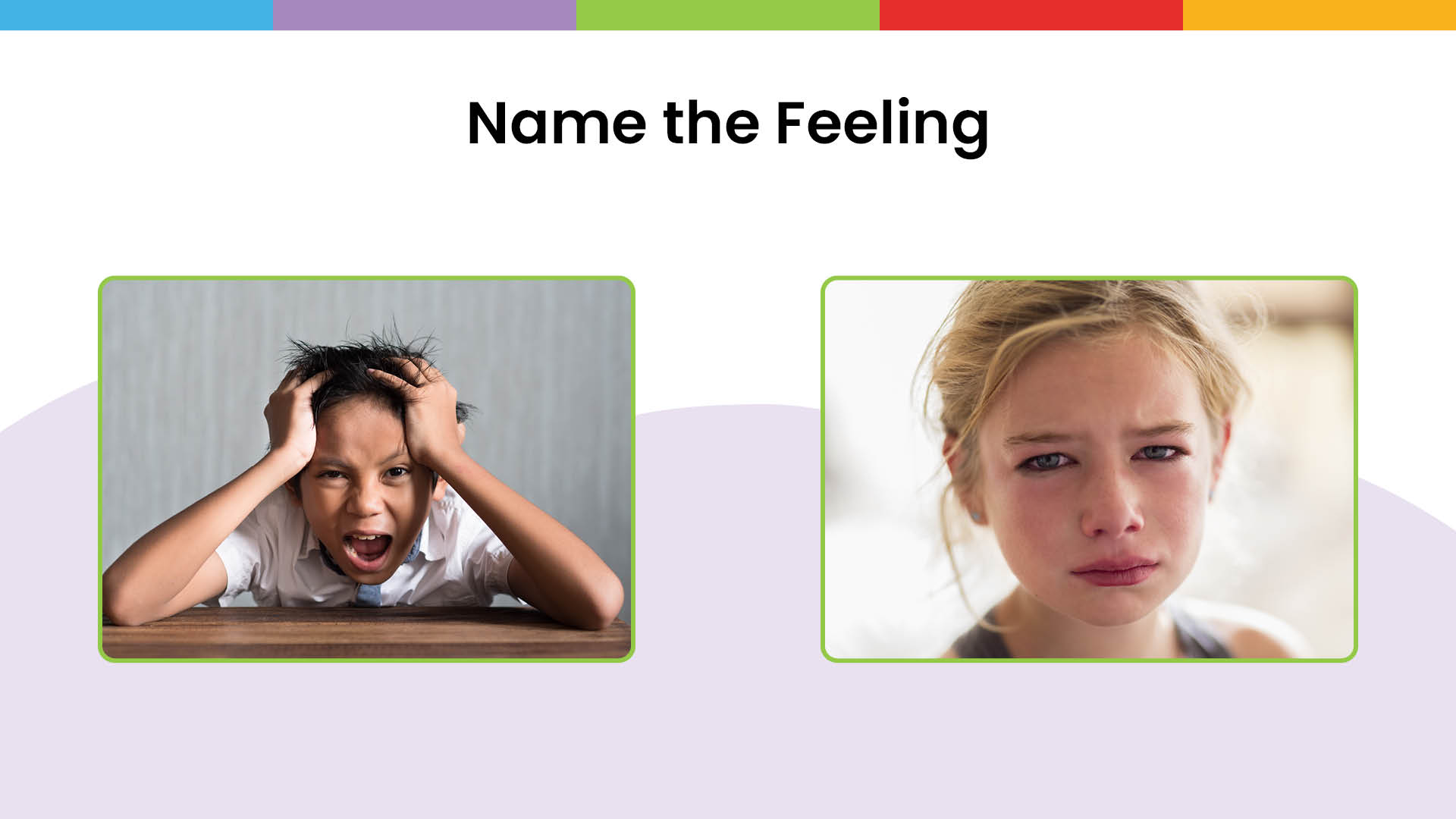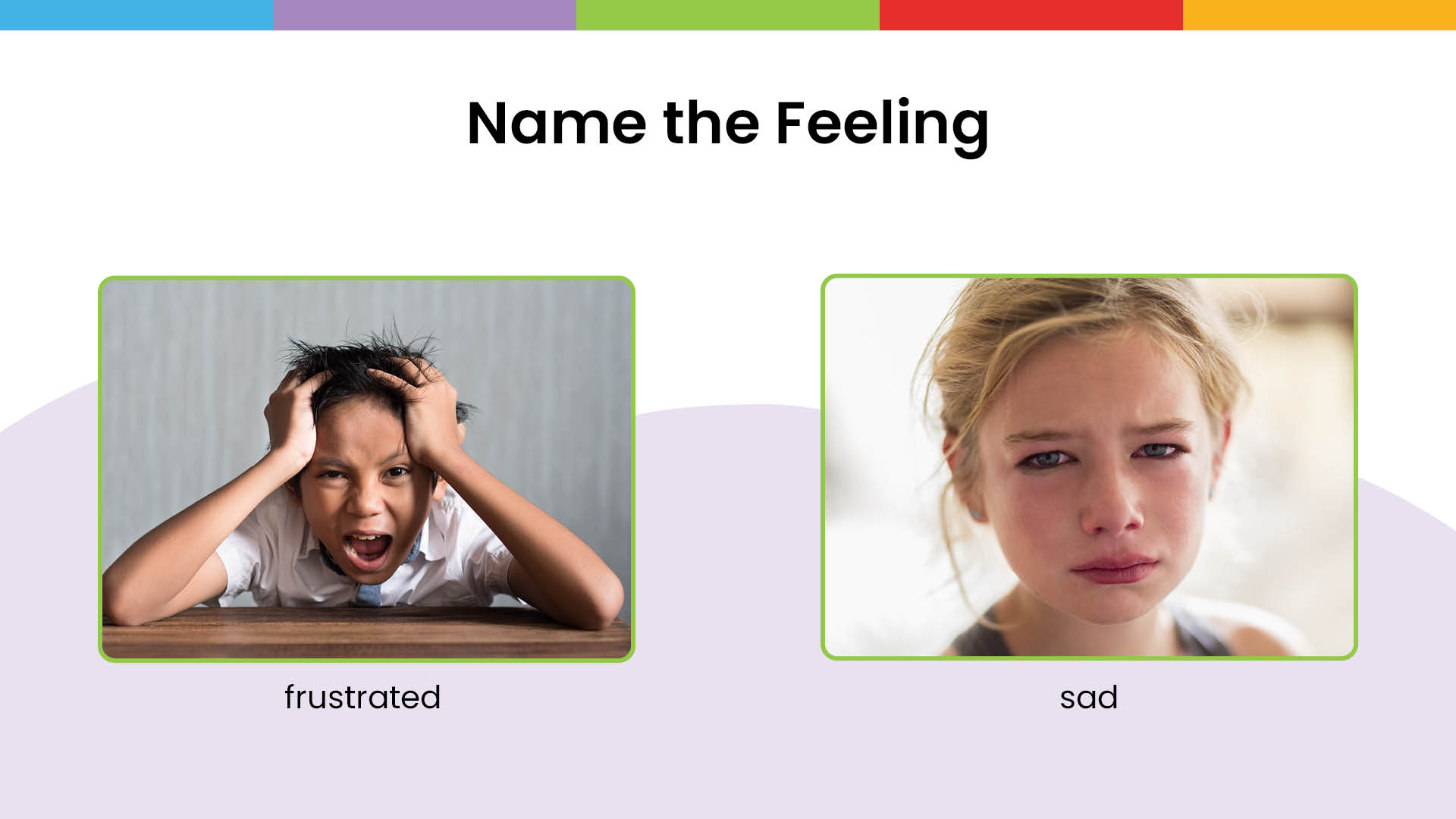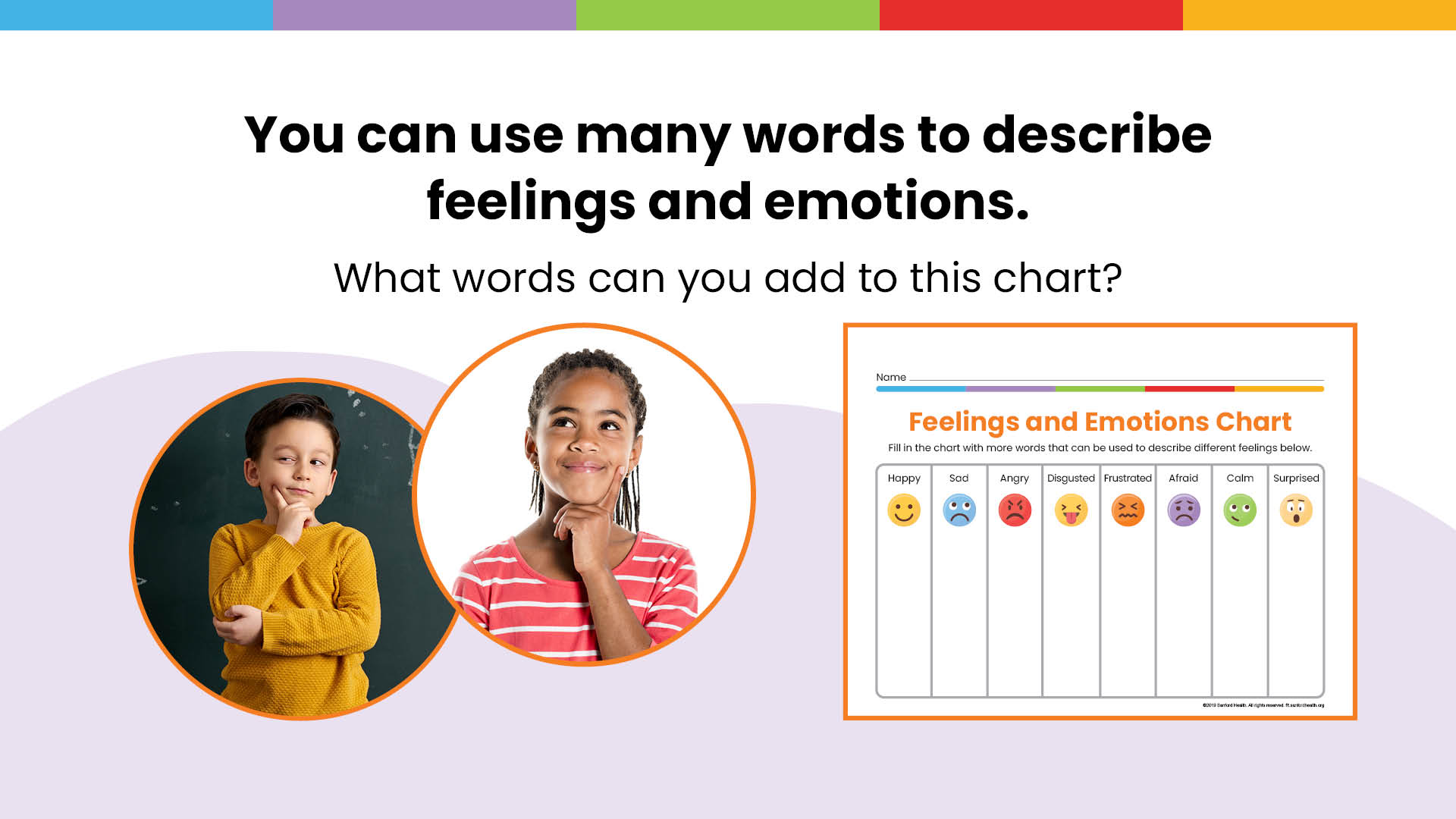Objectives
- Identify words that can be used to express feelings and emotions.
Info to Know
This unit introduces mood. Students will learn that their feelings and emotions put them in a mood and that their mood influences their choices. Four essential concepts form an understanding of mood:
- Mood (along with recharge) is a key influencer of fit choices.
- Mood is your motivation. Mood can be "I will make a healthy choice," or "I won't make a healthy choice."
- Self-motivation strategies can help you motivate your mood.
- Your mood can change throughout the day.
Set The Stage
Teacher note: Prior to beginning this unit, download the Little Learners Cozy Spot fit-Kit to create a special space where kids can go to independently cope with BIG feelings such as anger, frustration, or sadness. Read How to Create a Cozy Spot for Kids Anywhere to learn more about the benefits of a cozy spot for kids.
Begin the lesson by hiding your face behind your hands. Move your hands and show your students a big smile. Ask them, “What words can you use to say how you think I am feeling?” Try this with different facial expressions. Brainstorm words students already know to help them describe their own feelings and emotions (e.g., happy, sad, calm).
Follow along with the slideshow as you continue the lesson.
To use this with your students click here.
Captivate
Facial Expressions Show Feelings
During the slideshow presentation, ask students to mimic each face then name the feeling or emotion.
Feeling words do not need to match the examples. The objective is to get kids talking about the many words that can be used to describe and express feelings and emotions.
Educate
Name Different Feelings
As a class, list words that describe feelings and emotions on the Feelings and Emotions Chart. Aim for at least three words for each facial expression. Your chart will be unique to the age and personalities of your students!
Make sure students are aware that feelings and emotions can change throughout the day.
Check for understanding: Can you name some feelings and emotions?
Activate
Check in With Your Feelings
Show your students how to check in with their feelings and emotions throughout the day. Give them this sentence to use to get them started: I feel _________________ right now.
Use the How Are You Feeling? printable for students to color a feeling face, then post it inside a frame to show how they're feeling. Students can change faces within their frames as needed, this will help them understand that feelings and emotions change throughout the day.
Close the Lesson
Share different scenarios, such as being ignored by a friend or playing a favorite game in PE, and ask students to explain how each would make them feel. Let students come up with similar situations they’ve been through, asking them to focus on how they felt and, in some circumstances, how their feelings and emotions changed. This would be a great journaling exercise as well. There are so many ways to help kids check in with their feelings. Get ready to show them how these feelings affect their mood.
Grade: K-2
Time: 20 Minutes
What You'll Need
Resources
- How Do You Feel? - Slideshow
- Feelings and Emotions Chart - Printable
- How Are You Feeling? - Printable
- Little Learners Cozy Spot fit-Kit - Printable
Materials
- Feelings Chart
- Markers
- Poster Board or White Board
- Slideshow
Health Education Standards
- Standard 1: Core Concepts–Express feelings in a healthy way.
- Standard 4: Interpersonal Communication
- Standard 5: Decision-Making
Social and Emotional Learning Competencies
- Self-Awareness
Extend the Lesson
- Play the fitGame, Emotion Commotion.
- Listen to Taking Care of My Mood from the fit music playlist to help kids become aware of their moods.
- Read Breathing Techniques to Inspire Mindfulness in Kids to learn how you can help your students relax and become more mindful of their feelings and emotions.
- Print the Feelings Faces Poster and Find the Feeling Matching Game to help students recognize and label feelings and emotions.











